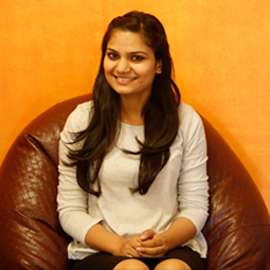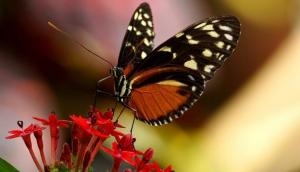
Chennupati Jagadish, an Indian-origin physicist, neurologist, and distinguished professor, has been awarded Australia's highest civilian honour, the Companion of the Order of Australia (AC).
He is a professor of Physics at the Australian National University Research School of Physics and Engineering. At present, he is the head of the Semiconductor Optoelectronics and Nanotechnology Group at the Australian National University and has done some acclaimed work in the field of nanofabrication and physics. Professor Jagadish holds five US patents.
He has published more than 820 international journal and conference papers, co-authored a book, co-edited five books, and guest-edited 15 special issues of journals.
Catch got an opportunity to speak with Chennupati Jagadish. He gave us insights into his personal life, education, his works, racism in Australia, and plans for the future. Here are the excerpts from the interview:
As an Indian-born scientist, how does it feel after being honoured with Australia's highest civilian honour?
It is humbling and grateful to receive Australia's highest civilian honour. Having come to Australia with my wife and a two-month-old baby daughter and a two-year contract as a research scientist at the Australian National University, it is humbling that my adopted country has recognised me with its highest civilian honour.
I am grateful to my birth country, India, for nurturing me from childhood to adulthood and giving excellent education and my adopted country, Australia, for providing me opportunities to excel in science and leadership to science nationally and globally. This proves everything is possible if we are dedicated and passionate about our work and work hard and never give up.
Do tell us something about your personal life.
I was born to a farming family in a small village, Vallurupalem, in Andhra Pradesh. My father was a school teacher and he migrated to even a smaller village, Arekayalapadu in Telangana. After finishing Grade 7, I had to go to high school and it is too far from my village. My father's friend and my high school teacher asked me to stay at their home and I finished high school while living with my teacher.
Two high school teachers played important roles in my life. I studied Class 11 and 12 in Guntur, BSc (Physics) in Tenali, and MSc(tech) in Andhra University and moved to Delhi University and completed my MPhil and PhD degrees in Physics. I worked At Sri Venkateswara College, New Delhi, as a lecturer in Physics and Electronics from 1985-88. Then I moved to Queen's University, Kingston, Canada, as a post-doctoral fellow and worked there till mid 90s. Before I left India for Canada, I had more than 200 regret letters from overseas universities.
I had to change my research fields to get this position and this has allowed me to learn something entirely new. I moved to the Australian National University (ANU) in July 1990 and stayed back here, reaching from Research Scientist position to Distinguished Professor of Physics. It has been a pleasure working at the ANU during the past 25+ years.
You are working on a new class of lasers that can help in telecommunications. How will this technique help the common man?
We use lasers in optical communications and for internet as light travels faster than electrons. Currently, the internet is popular due to many technologies including optical communication systems. Smaller the lasers, faster they can be switched on and off to send information. We are using nanotechnology to develop a new class of lasers which are smaller, faster and more energy efficient. This will increase speed and reduce power consumption.
How could your solar cell project help India with the mammoth solar mission?
In terms of solar cells, both efficiency and cost are important. We want to have low-cost and efficient solar power generation. We are working on the use of nanotechnology for lightweight and efficient solar cells at low cost. Of course, these are long-term projects and our aim is to explore new ideas and demonstrate these ideas are working. These are a long way from the marketplace. Next generation technologies take time and one needs to develop these over few years.
You have an expertise in the field of nanofabrication. Elaborate a little about it.
Nanofabrication is engineering materials at atomic and molecular scale. This allows us to pack more devices for example in memory devices and discover new phenomena and develop new technologies. We are using nanofabrication to engineer couple sunlight more efficiently into solar cells.
We are also developing optical circuits to engineer "light on a chip". Nanotechnology has great potential to make an impact in all industry sectors including electronics, computing, data storage, communications, energy, defence, biomedical field.
There were reports of crimes against Indians in Australia, and such incidents continue to happen. What are your views regarding racism in Australia?
I have not experienced any racism in Australia during my 25+ years in Australia. Sometimes, students live in rough areas in cities as the rent is cheaper. They work late nights and end going home late. So it doesn't matter what your origin is; if one ventures into rough areas late in the night, the potential for violence is high.
One could be in a wrong place at wrong time and bad things can happen. Australian Federal and State Governments acted quickly and kept everything under control by engaging with the community and involving students group as community consultation process.
Any future projects you'd like to tell us about?
We are engineering neurons to understand how the brain works. Our aim is to develop "brain on a chip" and learn how signals are transmitted by neurons in the brain. This is a really exciting area and the post-doctoral fellow working on this project is from Delhi and she did her PhD from Jawaharlal Nehru Centre in Bangalore.








![BJP's Kapil Mishra recreates Shankar Mahadevan’s ‘Breathless’ song to highlight Delhi pollution [WATCH] BJP's Kapil Mishra recreates Shankar Mahadevan’s ‘Breathless’ song to highlight Delhi pollution [WATCH]](https://images.catchnews.com/upload/2022/11/03/kapil-mishra_240884_300x172.png)

![Anupam Kher shares pictures of his toned body on 67th birthday [MUST SEE] Anupam Kher shares pictures of his toned body on 67th birthday [MUST SEE]](https://images.catchnews.com/upload/2022/03/07/Anupam_kher_231145_300x172.jpg)






